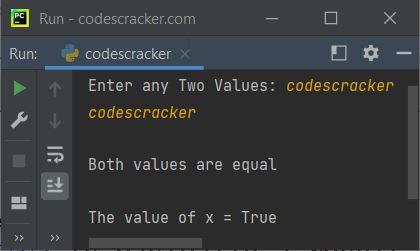- Python Basics
- Python Tutorial
- Python Applications
- Python Versions
- Python environment setup
- Python Basic Syntax
- Python end (end=)
- Python sep (sep=)
- Python Comments
- Python Identifiers
- Python Variables
- Python Operators
- Python Ternary Operator
- Python Operator Precedence
- Python Control and Decision
- Python Decision Making
- Python if elif else
- Python Loops
- Python for Loop
- Python while Loop
- Python break Statement
- Python continue Statement
- Python pass Statement
- Python break vs. continue
- Python pass vs. continue
- Python Built-in Types
- Python Data Types
- Python Lists
- Python Tuples
- Python Sets
- Python frozenset
- Python Dictionary
- List vs. Tuple vs. Dict vs. Set
- Python Numbers
- Python Strings
- Python bytes
- Python bytearray
- Python memoryview
- Python Misc Topics
- Python Functions
- Python Variable Scope
- Python Enumeration
- Python import Statement
- Python Modules
- Python operator Module
- Python os Module
- Python Date and Time
- Python Exception Handling
- Python File Handling
- Python Advanced
- Python Classes and Objects
- Python @classmethod Decorator
- Python @staticmethod Decorator
- Python Class vs. Static Method
- Python @property Decorator
- Python Keywords
- Python Keywords
- Python and
- Python or
- Python not
- Python True
- Python False
- Python None
- Python in
- Python is
- Python as
- Python with
- Python yield
- Python return
- Python del
- Python from
- Python lambda
- Python assert
- Python Built-in Functions
- Python All Built-in Functions
- Python print() Function
- Python input() Function
- Python int() Function
- Python len() Function
- Python range() Function
- Python str() Function
- Python ord() Function
- Python chr() Function
- Python read()
- Python write()
- Python open()
- Python Examples
- Python Examples
Python True Keyword
The "True" keyword in Python is basically a Boolean value. There are two boolean values: True and False. The "True" is basically a result of:
- a comparison operation
- or any other logical expression whose value evaluates in the form of True or False.
For example:
a = 10 b = 20 c = 10 print(a==c) print(a<b)
The output is:
True True
Python True keyword example
True is the result of a boolean operation. That is, if the expression(s) of a boolean operation evaluate to be True, then the condition evaluates to be True. Here is an example that demonstrates it:
print("Enter any Two Values: ", end="") a = input() b = input() x = a==b if x: print("\nBoth values are equal") else: print("\nBoth values are not equal") print("\nThe value of x =", x)
The snapshot given below shows the sample run of the above program, with user input "codescracker" as the first and second values:

Advantages of the True keyword in Python
- It is a built-in keyword in Python, meaning it can be used without the need for additional definition or import statements.
- It is straightforward to comprehend and use in programming, particularly in conditional statements, as it represents a condition as being true.
- It is a fundamental component of Python's built-in logic, enabling more complex programming and algorithm design.
Disadvantages of the True keyword in Python
- Because "True" is case-sensitive, "true" would be rejected as a boolean value.
- If used incorrectly, "True" can be misused in programming, such as in a loop without an exit condition, which can lead to an infinite loop.
- The "True" keyword can be ambiguous in certain cases, such as when dealing with empty containers; an empty container evaluates to "False,", while a non-empty container evaluates to "true."
The "True" keyword should be used with caution and intelligence to avoid errors and ambiguity in programming. The "True" keyword enables more intricate logical operations and algorithm design.
« Previous Tutorial Next Tutorial »